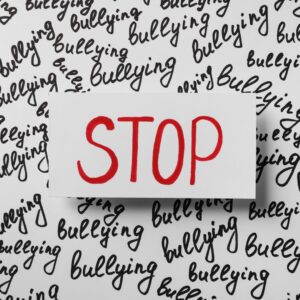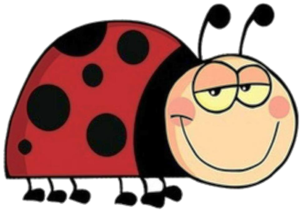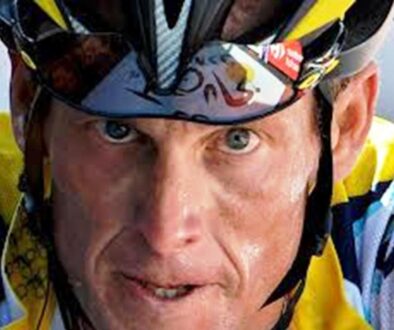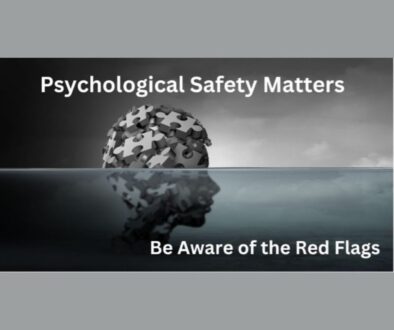Anti-Bullying: From Prevention to Building Resilience in Our Youth

Bullying is a significant issue in many communities, and our culture often responds by advocating for anti-bullying measures. But is this approach the most effective way to address the problem? I beleive the key to lasting change lies not in just stopping bullying, but in building resilience and virtues in the next generation.
When Bullying Hit Home: A Personal Story
When our son Benjamin was 15, we moved to Calgary. Little did we know, he was silently enduring bullying at his new school. It wasn’t until one day he came home with a chunk of hair cut out from the back of his head that we realized what was happening. A student sitting behind him in high school had been aggressively mean to him. This was only the beginning; I soon learned that during his first week at the school, someone had left a note on his locker that read, “Go home! Ontario F@$#!”
When I asked if I could step in and talk to the school, Benjamin refused. “No!” he insisted. He wanted to handle it on his own.
Empowering Our Children
Despite the bullying, Benjamin came up with a plan to deal with the situation. He started forming a support network of friends who had his back, and with time, the bullying stopped. His ability to overcome the challenge, along with the support from his peers played a crucial role in turning the situation around.
This experience reinforced a powerful lesson for me: once we know our children are safe, we must resist the urge to solve their problems for them. By letting them take charge, we empower them to develop resilience and the confidence to face challenges.
The Tragic Case of Amanda Todd: A Wake-Up Call
In the fall of 2012 Amanda Todd, a 15-year-old high school student died by suicide after being cyberbullied. Her death in her home-town of Coquitlam, British Columbia, shocked the world. Her heartbreaking online video, in which she shared her torment, reached over 20 million viewers. In it, she described the relentless bullying she endured after a photo of her, taken in a moment of poor judgment, was posted on Facebook. Her video was a painful reflection of isolation, abuse, depression, and suicidal thoughts.
Amanda’s cry for help highlighted the negative impact of online harassment and bullying, with cruel comments and threats deepening her despair. Here is an example: “You’re a pathetic excuse for life and you don’t deserve to breathe my air, stupid %#@$.” These cruel and demeaning words would be hurtful to most us, and particularly painful to a vulnerable youth.
We Need Values and Empathy
Amanda Todd’s death made clear the severe outcomes of the bullying crisis and sparked widespread discussion about youth suicide and mental health. Despite progress in certain areas, bullying is still far too prevalent, and the responses to it often fall short of addressing the root causes.
The anti-bullying movement, while well-intentioned, often focuses on the negative—what should be stopped—rather than the positive—what should be encouraged. Premier Christy Clark’s statement at the time, “Bullying has to stop,” is important, but it’s only half of the solution. The truth is, we need to create environments where positive values, virtues, and resilience support people, including our youth to help them thrive.
Shifting the Focus from Anti-Bullying to Building Character
To reduce bullying, we need to focus not just on eliminating harmful behaviors, but on actively building resilience and instilling virtues. There are two essential components to strengthening resilience:
- Internal Resilience: This involves developing personal coping strategies and emotional strength. Sadly, for Amanda Todd, these coping mechanisms were not enough to counterbalance the overwhelming pain she experienced.
- External Support: An environment where youth receive appropriate challenges, encouragement, and, crucially, safety. Amanda lacked this crucial support system, which is why she was so vulnerable.
In today’s society, where material wealth, fame, and appearance often take precedence, basic values like respect, responsibility, and kindness can be overlooked. It’s imperative that we nurture these values in our communities and schools.
Building a Culture of Care: Encouraging Values Over Defiance
We need to create communities that focus on character-building and teaching virtues such as mutual respect, responsibility, dignity, kindness, and empathy. Programs like The Roots of Empathy and The Virtues Project have already proven effective in instilling these values in children and youth. Pink Shirt Day, which started in Nova Scotia, is another great example of a movement that shifts the focus from bullying to promoting kindness and mutual respect.
If you have any influence in your community or school, consider advocating for or implementing programs that emphasize building these positive qualities. When we focus on developing virtues, we help our youth develop the inner strength to overcome challenges and support one another.
How Do I Protect My Grandson?
As a footnote to this discussion I had a grandmother write to me asking what she could do to support her grandson, age 12, who was being bullied. Here is my answer:
- Help your grandson understand that he is not alone and that it’s not his fault.
- Encourage him to use ignoring, walking away, or seeking help from a trusted adult.
- If safe to do so, encourage him to speak up and assert himself the person(s) involved. The book, The Monster, the Mouse and Me by Pat Palmer can help.
- Document all Incidents of the bullying including dates, times, locations, and people involved.
- Encourage the parents to schedule a meeting with teachers, school counselors, and administrators to discuss the issue, where they share the documentation.
- Work together with the school to develop a plan to address and prevent further bullying. Advocate for educational programs, such as The Virtues Project, for both students and staff.
- Foster positive friendships by encouraging your child to spend time with supportive peers. If he does not have strong friendships, consider signing him for classes, sports activities, or community groups where he can develop a healthy and supportive network.
- If the bullying persists or escalates, consider involving mental health professionals, such as a counselor or therapist, to help him cope with the emotional impact.
- Be aware of his online presence and monitor his social media accounts.
- Regularly check in with him to see how he is feeling and if the situation has improved.
Conclusion
As we remember Amanda Todd, grandsons, and granddaughters affected by bullying, we can ask ourselves: How can we make a lasting difference? The answer is in creating environments where respect, kindness, and empathy are the norm.
Let’s honor Amanda Todd’s memory by committing to building communities that encourage positive virtues and resilience, ensuring that every young person has the support they need to thrive.
Please check out these related posts:
- How Healthy Boundaries Can Protect Your Values
- Strengthen Your Internal Locus of Control
- Are You REALLY in An Abusive Relationship?





October 16, 2012 @ 7:17 pm
Hi Patricia: I’ve heard some “experts” saying things like, “Bullying is part of life – grow up and get over it”, but the bullying that we experienced as kids was on a whole different level than the kids are experiencing today. I find it hard to believe that people would say the things that were said to this poor girl. Then I see the video of the grandmother who was abused by teens on a bus and I’m right there with your Mother. I see a certain segment of the world becoming more and more enlightened, while the rest goes to hell. Can you imagine how much someone must be suffering themselves to be that vicious?
October 18, 2012 @ 2:20 pm
Yes, Chuck, Jean Illsley Clark talked about how when we indulge our youngsters it is actual abuse, crippling them from the ability to empathize with others, to feel competent, (without putting others down) and feel gratitude for the abundance in their lives.
You might be interested in an article I did called Lessons from a Bullied Grandmother. Obviously we have more lessons to learn.